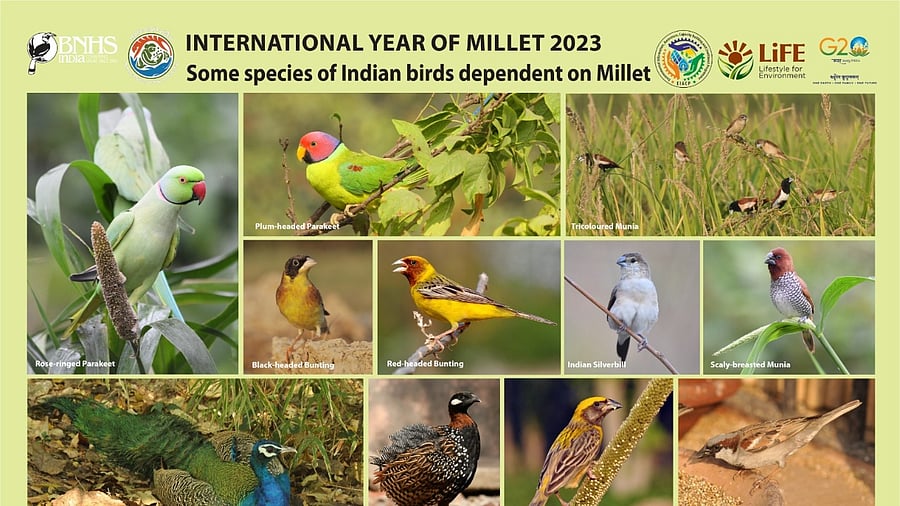
At a time when India is on the forefront of promoting and popularising millets during the International Year of Millets (IYOM), the Mumbai-headquartered Bombay Natural History Society (BNHS) is now speaking about how millets are useful for bird life.
The BNHS has come out with a presentation and poster on ‘Birds and Millets’ coinciding with the International Year of Millets (IYOM).
In fact, Union Minister of Environment, Forest and Climate Change, Labour and Employment and Ashwini Kumar Choubey, Bhupender Yadav, Union Minister of State for Consumer Affairs, Food and Public Distribution and Environment, Forest and Climate Change appreciated the BNHS effort at the National Level Millet Exhibition that coincided with the International Day for Biological Diversity at the Jio Convention Centre in Mumbai on Monday.
“Its a very unique initiative that we have undertaken. Several birds are dependent on millets and millets cultivation would be beneficial to these species. When we are promoting millets, which are robust crops, we must also speak about its relationship with birds,” Kishor Rithe, Honorary Secretary and Interim Director, BNHS, told DH on Tuesday.
“Millers are a group of nutritiously rich, drought tolerant and mostly grown in the arid and semi-arid regions of India. They are small-seeded grasses belonging to the botanical family Poaceae. They have less requirement of water, fertilizers, pesticides, and weedicides. While these are very important for food security, nutrition and welfare of farmers, these are very important for birds as well,” said Dr. Rajat Bhargava, Assistant Director, BNHS.
The poster that BNHS had made include birds like Rose-ringed parakeet, Plum-headed parakeet, Red-headed bunting, Tricoloured munia, Indian silverbill, Scaly-breasted munia, Indian peafowl, Black francolin, Baya weaver and House sparrow - and speaks about its relationship with millets like Pearl (Bajra), Foxtail (Kangni), Barnyard (Sama), Kodo (Kodon), Finger (Nachni) and Sorghum (Jowar).
“These are robust millets and they have a very intricate relationship with birds. Not only these are important for the food chain but it is also important for biodiversity,” Dr Bhargava, a senior scientist, told DH over phone from Meerut.
The main millet-growing states in India are Rajasthan, Maharashtra, Karnataka, Andhra Pradesh, and Madhya Pradesh. These states have a large number of millet farmers who grow the grain for both domestic and international markets.
In addition to the major millet-producing states, there are also a number of smaller millet producing regions located throughout the country. These regions include the states of Uttar Pradesh, Bihar, and Madhya Pradesh. The production needs to be further ramped up.
